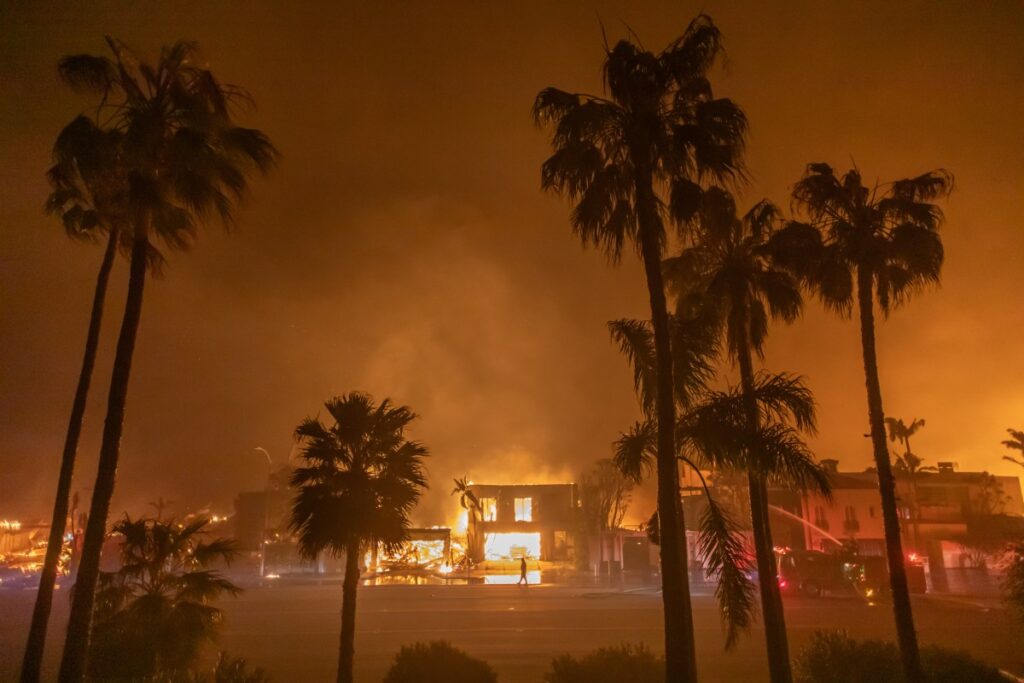Ten years ago, two college students built a fire extinguisher that put out fires using only a noisy 10-inch subwoofer. The internet lapped it up, and Jimmy Fallon booked a demonstration on “The Tonight Show.”
But since that brief viral moment, there has been little more than a whisper about the technology.
It’s not for lack of effort. College students weren’t the first to prove this concept. DARPA investigated the incident in 2012. And a search of the scientific literature reveals dozens of researchers studying this idea.
One startup now claims to have solved this problem. Sonic Fire Tech has built an acoustic fire suppression system that not only extinguishes flames, but has the potential to protect homes and other buildings from wildfires. The startup has raised a $3.5 million seed round from investors including Khosla Ventures and Third Sphere, according to information obtained exclusively by TechCrunch.
Wildfires cost the United States $424 billion annually. The problem has become acute in places like California, where insurance companies are refusing to renew policies after repeated fires razed large swathes of the state.
Sonic Fire Tech has been developing their technology over the last few years. Michael Thomas, the startup’s chairman of the board, was exploring the idea of using sound to fight fires, but when he hit a wall, he reached out to Jeff Bruder through LinkedIn. Bruder worked at NASA, focusing on heat and acoustics.
“This is kind of a new-age founding story,” Bruder, the company’s CEO and CTO, told TechCrunch.
tech crunch event
san francisco
|
October 27-29, 2025
Bruder was intrigued by Thomas’ idea and began building a prototype. “We got a subwoofer and some parts from Home Depot and AutoZone and said, ‘Hey, let’s see if we can do something better than everyone else,'” Bruder recalls. “We extinguished a 7-foot fire in our driveway.”
The startup quickly ditched the subwoofer and moved to lower frequencies. The problem with audio frequencies is that systems powerful enough to suppress fires can harm people’s hearing, Bruder said. “Essentially, you have to throw your speaker design in the trash and start from scratch,” he said.
There are competing theories as to how exactly acoustic energy can disrupt combustion, but the soundless demonstration certainly suggests that Sonic Fire Tech is onto something.
The new system uses a reciprocating piston, much like the piston in a car engine, but the piston is much larger. An electric motor turns a crankshaft that pulses a 2-foot piston to generate infrasound (a technical term for sounds below the human hearing range, or about 20 Hz).
“Because we designed everything ourselves, we lowered the frequency below the audible range. This allows us to transmit farther and makes it safer,” Bruder said.
Sonic Fire Tech’s current record is 25 feet. Bruder said larger systems could operate up to 330 feet away. The company plans to sell and install the system for about 2% of the home price and is in talks with insurance companies to certify the technology.
To protect your home, Sonic Fire Tech sends infrasound from a single generator through rigid ducts installed under the roof ridge and eaves. On the ridge, fire into the pitch to suppress any fires that may start from debris in the gutters. Under the eaves, they are directed towards the ground to contain the flames rising close to the walls. When the sensor detects flame, the system turns on.
The home system draws about 500 watts of power, and Sonic Fire Tech plans to use lead-acid batteries for backup in case of a power outage. Unlike sprinkler systems, they do not require a water source, which can be scarce in wildfire country.
The startup is working with PG&E and Southern California Edison to demonstrate the technology in the home and has signed a letter of intent with a chemical storage facility.
“The natural progression is that if we are certified as a sprinkler replacement, you can just run a pipe into your home and protect your kitchen and all the areas that need to be protected,” Bruder said.
Source link

